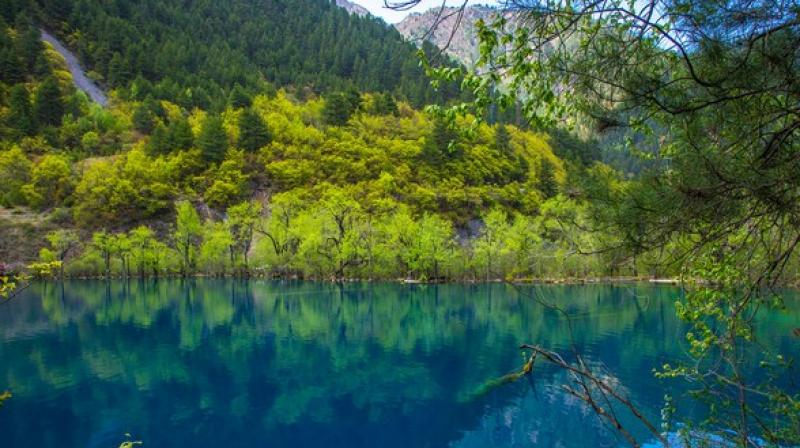Effect of global warming on water bodies

Washington: While studying the effects of warming global warming on lakes, researchers found out why lakes may remain cool in deeper levels and warm on the surface.
Lakes play an important role in the global carbon cycle, acting as large natural bioreactors. The temperature of a lake represents an important constraint on the amount of carbon dioxide and methane it emits into the atmosphere.
It was generally assumed that warming global warming stimulates microbial respiratory processes and the production of these greenhouse gases, while at the same time reducing the carbon storage in lake sediments.
According to the study published in the journal, 'Limnology and Oceanography Letters,' an international research team has now examined these interactions more closely and discovered unexpected effects.
The research project not only targeted the direct effects of warming global warming, but also the indirect ones. The main focus of the investigations was the water temperature and greenhouse gas production in the deeper parts of the lakes.
"We don't want to question the fundamentals of thermodynamics. There is no doubt that the rates of respiratory metabolic processes in lakes are generally higher at increased water temperatures," explained Professor Moritz Lehmann from the Department of Environmental Sciences at the University of Basel.
"However, climate change will not cause every lake to warm up everywhere," added Professor Lehmann. Lakes worldwide are warming at the surface. However, they are also losing transparency due to increased algae production and enhanced turbidity of the lake water.
"The surface-water warming and the loss of transparency have the effect that more heat is trapped in the upper layers of the lakes, leaving the deeper waters thermally isolated," said lead author Dr. Maciej Bartosiewicz from the Department of Environmental Sciences at the University of Basel.
"Under some circumstances, this can even lead to the cooling of water masses near the bottom of the lake," continued Bartosiewicz.
The subtle cooling slows down respiratory decay processes and carbon dioxide production in the lakes, increasing carbon burial within the sediments. Model simulations suggest that the observed effects are most pertinent to relatively small and shallow lakes, which make up approximately half of the global lake surface.
The increased differential warming in lakes has yet another effect: the pronounced thermal stratification entails that the deeper water layers do barely mix and are poorly ventilated, which can lead to prolonged anoxia. Under these oxygen-free conditions, methane production by anaerobic microorganisms is enhanced.
"All in all, warming" global warming increases the greenhouse gas potential of lakes, as expected. However, this has less to do with the warming directly, and more to do with increased oxygen depletion at the bottom of these lakes," concluded Bartosiewicz.

